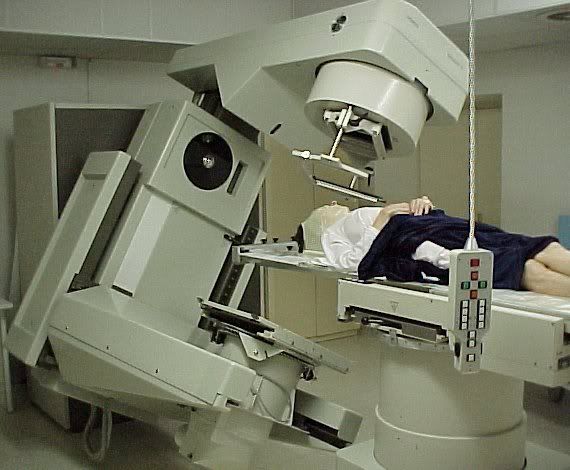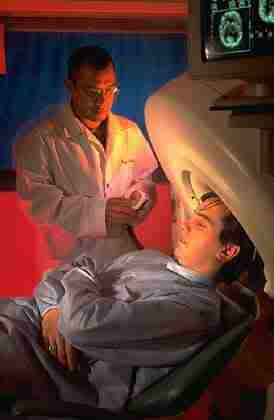Will Widespread Human Papillomavirus Prophylactic Vaccination Change Sexual Practices of Adolescent and Young Adult Women?.
Two virus-like particle (VLP) human papillomavirus (HPV) vaccines have been shown to be nearly 100% effective in preventing type-specific persistent HPV infections. These vaccines have an almost identical external epitope structure to native HPV virions but are manufactured using recombinant biological techniques and contain no viral DNA so that they are neither infectious nor capable of inducing neoplasia. When administered parenterally in three doses over 6 months, these VLP vaccines induce neutralizing antibodies in humans that provide long-lasting HPV type-specific immunity. Severe adverse events directly related to HPV vaccines have been rare; specifically, the most commonly reported side effects are injection site inflammation and pain. Idiosyncratic reactions, such as neurodevelopmental delays, including autism, thought to be related to other childhood vaccines, have not been reported after vaccination against HPV. Importantly, the tested HPV vaccine preparations have been dispensed in single-dose vials to date. They have not contained preservatives required for multi-dose vials, such as thimerosal, a mercury-based preservative that has been inconsistently associated with developmental delays in epidemiological studies.
Preventive measures do not always lead to high-risk behavior.
Two separate programs are in development, one manufactured in yeast by Merck & Co., Inc. (Whitehouse Station, NJ) and another manufactured in baculovirus by Glaxo Wellcome UK Ltd. (Uxbridge, Middlesex, UK). Because 99.7% of all cervical cancers are associated with HPV and because VLP vaccines provide protective immunity that is likely to be long lasting, experts theorize that a worldwide vaccination strategy could dramatically reduce the incidence of cervical carcinoma. Although there is currently no evidence that VLP vaccination can prevent cervical cancer, intriguing data on the Merck VLP vaccine were presented at the October 2005 Infectious Disease Society of America in San Francisco, California. In a prospective, randomized trial of 12,167 16- to 26-year-old females, VLP vaccination against HPV type 16 and 18 provided 100% protection against high-grade HPV type 16–related and type 18–related cervical intraepithelial neoplasia, an important surrogate marker for protection against cancer. Human papillomavirus type 16 is the most common HPV type associated with high-grade cervical dysplasia as well as invasive cervical cancer and together with HPV type 18 accounts for approximately 70% of cervical cancers. These exciting data about the safety and efficacy of HPV vaccination will undoubtedly be carefully examined by the Advisory Committee on Immunization Practices (ACIP) of the Centers for Disease Control and Prevention. This Committee develops written recommendations for the routine administration of vaccines to the pediatric and adult populations of the United States, along with schedules regarding the appropriate periodicity, dosage, and contraindications applicable to vaccines.
The ACIP is the only entity in the Federal government that makes such recommendations, and we believe that these data will lead to a recommendation by the ACIP of widespread HPV vaccination in the United States in 2006 as well as approval by the U.S. Food and Drug Administration of this paradigm. Because HPV 16 and 18 are associated with approximately three quarters of cervical carcinomas, it is anticipated that this will result in a dramatic reduction in cervical cancer mortality for the next generation of women worldwide. Because HPV is passed through intimate skin to skin contact, vaccination would best be implemented before the onset of sexual activity. However, it is unlikely that most young women have been infected with each HPV type covered by the respective vaccines, 16 and 18 for one paradigm or 16, 18, 6, and 11 for the other. Thus, vaccination after sexual debut is a rational practice. For example, approximately three quarters of the women aged 16 to 26 years enrolled in the pivotal quadra-valent HPV vaccination trial discussed above tested negative at the time of study entry to all four HPV types (6, 11, 16, and 18), and most women that tested positive at the first study visit had been infected with only one of the four HPV types. Thus, although HPV infection generally occurs shortly after sexual debut among young women, exposure or infection by every relevant HPV type that can be prevented is rare in this age group.
Recently, it has been suggested that the administration of this vaccine to young girls in the United States might increase sexual promiscuity among adolescents or young adults. Perhaps, once a young woman is incapable of becoming infected with the viruses that are associated with most cervical cancers, she will alter her attitudes concerning the onset and/or frequency of sexual activity. Is this idea supported by data or simply a misconception based on erroneous beliefs or moral convictions? How do young Americans decide when to begin having sex? Are there patterns in these decisions? In other words, are women having sex earlier or later in life? Have other activities, such as the easy access to birth control or the “morning after pill,” resulted in altered sexual practices among young people? Are there other factors that impact these complex decisions, such as parents and television programming? This Current Commentary addresses this controversial topic and outlines the debate as to whether widespread HPV prophylactic vaccination will change sexual practices of adolescent and young adult women in America.
The U.S. Centers for Disease Control and Prevention has conducted biennial national surveys to assess adolescent sexual behavior. Six such national surveys were conducted between 1991 and 2001 using independent, three-stage cluster samples to obtain cross-sectional representative cohorts of students in grades 9 to 12 in all 50 states and the District of Columbia. In each sample, between 10,904 and 16,296 students participated, school-response rates ranged from 70% to 79%, and student-response rates were greater, ranging from 83% to 90%. Overall, response rates for these surveys ranged from 60% to 70%. Interestingly, American high school girls reported a gradual decline in sexual encounters in the last decade. The decline in the number of girls reporting ever having had sexual intercourse has been associated with reports of fewer sexual partners among girls who stated they had had sex. Concurrently, sexually active respondents reported an increase in the use of condoms during their most recent sexual intercourse. The explanation for this trend is undoubtedly complex but has obviously occurred in a society that is increasingly more open about discussing sexual issues. Thus, an open dialogue about HPV vaccination among these individuals is unlikely to significantly alter this trend.
Moreover, although equally controversial to HPV vaccination, the distribution of condoms in high schools and the increased availability of postcoital contraception (morning-after pill) has not been associated with more or younger sexual encounters among adolescent girls and young adult women. Indeed, the prevention of sexually transmitted diseases was noted to be a rarely reported reason for using condoms among young men and women in surveys performed both domestically and internationally. In addition, a large randomized, controlled trial of young adolescents with nonprescription pharmacy access to postcoital contraception only showed an increase in the use of the use of morning-after pills alone; specifically, investigators found no decrease in the use of other forms of contraception, increase in the frequency of unprotected intercourse, or increase in the number sexual partners.
How do young girls make decisions about when to begin having sexual relations? Many have suggested that parents (the “home environment”), peers, and the age of the romantic partner are the dominant influences on adolescents regarding sexual education and sexual decision making. For example, how parents allow girls to choose “boyfriends” or romantic partners strongly influences whether they engage in intercourse during adolescence. In one study, 13- and 14-year-old girls whose boyfriends were six or more years older were about six times more likely than girls with same-age partners to report having intercourse. Sometimes the influence peers have on the sexual behavior of high school–aged boys and girls is greater than parents might enjoy. During adolescence, the best control parents have over their child’s behavior, and specifically the early introduction to sexual relations, is to influence their experiences through open and honest dialogue and by shaping their peer group. For example, one report suggests that adolescents that perceive less “parental monitoring” are nearly twice as likely as those that perceive higher monitoring levels to test positive for a sexually transmitted disease, report not using a condom at last sexual intercourse, having had recent multiple and high-risk sexual partnerships. Further, teens with less supervision were three times more likely than more closely supervised adolescents to report new sex partners in the past 30 days and to have not used any contraception during the last sexual intercourse episode.
Another strong influence on young people in the United States is television programming. Recent studies have documented increasingly offensive and sexually explicit programming on television networks leading to earlier ages of first sexual intercourse. If activists are interested in further increasing the age of sexual debut among adolescent women in the United States and further reducing sexual encounters among American teenagers, focusing on this most influential media source as well as strengthening family relationships and promoting good parenting is likely to impact these worthy goals while lobbying against widespread HPV vaccination is not likely to be beneficial. Unfortunately, we are reared in a society in which talking about sexuality in an open and honest manner is not always taught or supported. However, education, whether it is about HPV or sexuality, is the only solution to responsible behavior. Early reproductive health education and education from both parental and formal sources is associated with reduced sexual encounters among high-risk adolescent girls.
Vaccine prevention strategies work when they are applied in a gender-neutral fashion. For example, polio, measles, tetanus, pertussis, diphtheria, rubella, mumps, and Haemophilus influenza B have been nearly eliminated in the United States as a result of this strategy. Hepatitis B infections have been reduced nearly 75% in the past 15 years by vaccinating high-risk infants at birth, all young children routinely, and high-risk, previously unvaccinated adults. Thus, HPV vaccination should be recommended to both boys and girls. Significantly, HPV vaccination of all females regardless of risk as well as vaccination of all boys has been shown to be cost-effective with the primary benefit to vaccinating boys being realized through a reduction in transmission of HPV types 16 and 18 reducing to females thus reducing the risk of cervical cancer.
Gender- and occupationally focused vaccination campaigns only result in ineffective eradication of disease. For example, targeted strategies for hepatitis B vaccination campaigns were largely ineffective in preventing hepatocellular carcinoma and chronic hepatitis B infection in Asian countries. In addition, only vaccinating women against rubella, because the major morbidity of this disease is in the newborn, was not effective in the United Kingdom. These examples as well as inducing “herd immunity,” indirect protection of those who remain susceptible, owing to a reduced prevalence of infections thereby reducing transmission of the virus, demonstrate that the incidence of cervical cancer will only be significantly reduced through widespread HPV vaccination without regard to risk or gender.
Seat belts do not cause reckless driving, tetanus shots do not cause children to seek out rusty nails, and hepatitis B vaccination has not altered sexual practices or increased injection-drug abuse in any population. Preventive measures do not always lead to high-risk behavior. It is naïve to think that abstinence and monogamy will eradicate the morbidity and mortality of cervical cancer as suggested by some conservative organizations. Society needs to emphasize the benefits of HPV vaccination and find ways to increase its adoption and not create ill-founded barriers. Support and approval of HPV vaccination is not synonymous with support and approval of promiscuity rather a cry to rally together to eradicate cervical cancer worldwide.




0 Comments:
Post a Comment
<< Home